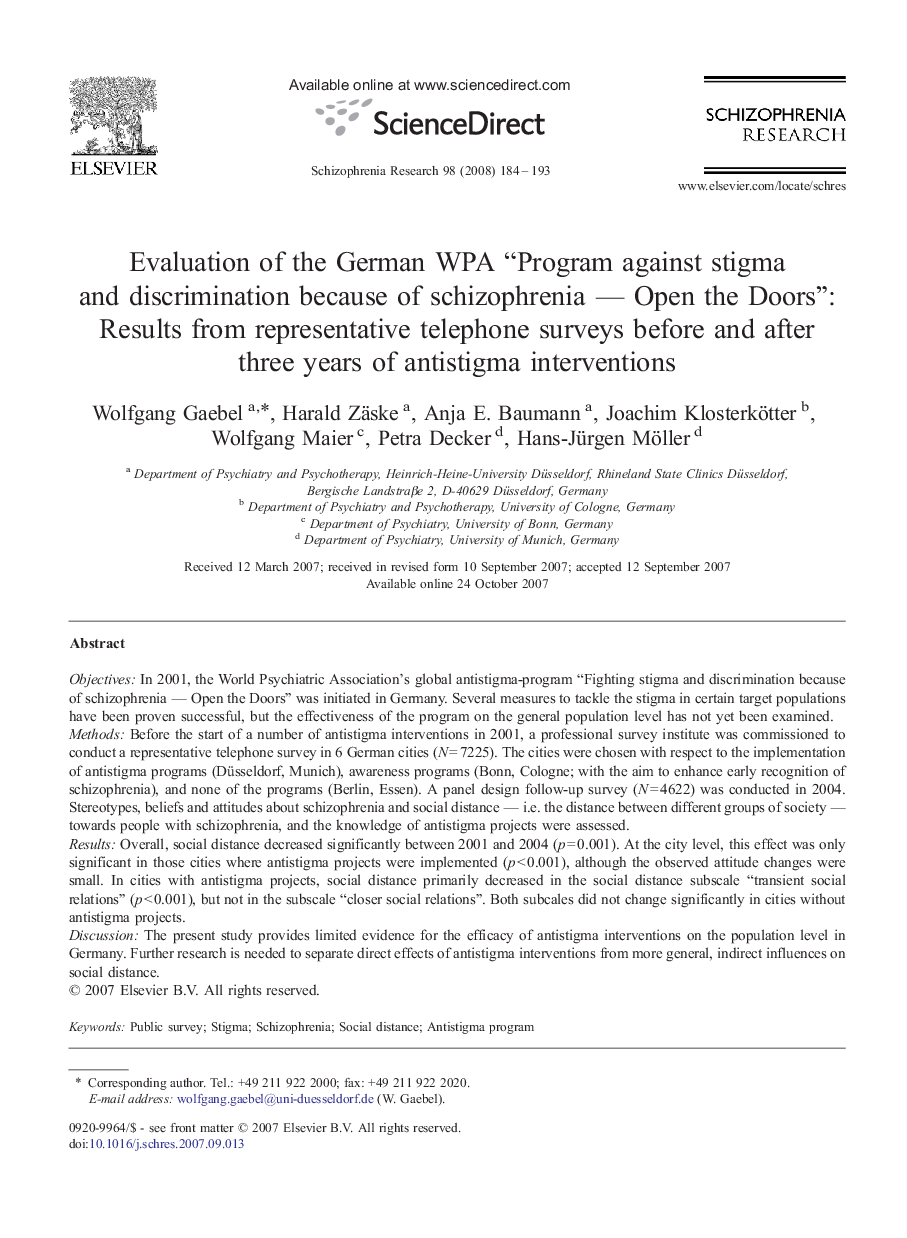| Article ID | Journal | Published Year | Pages | File Type |
|---|---|---|---|---|
| 340038 | Schizophrenia Research | 2008 | 10 Pages |
ObjectivesIn 2001, the World Psychiatric Association's global antistigma-program “Fighting stigma and discrimination because of schizophrenia — Open the Doors” was initiated in Germany. Several measures to tackle the stigma in certain target populations have been proven successful, but the effectiveness of the program on the general population level has not yet been examined.MethodsBefore the start of a number of antistigma interventions in 2001, a professional survey institute was commissioned to conduct a representative telephone survey in 6 German cities (N = 7225). The cities were chosen with respect to the implementation of antistigma programs (Düsseldorf, Munich), awareness programs (Bonn, Cologne; with the aim to enhance early recognition of schizophrenia), and none of the programs (Berlin, Essen). A panel design follow-up survey (N = 4622) was conducted in 2004. Stereotypes, beliefs and attitudes about schizophrenia and social distance — i.e. the distance between different groups of society — towards people with schizophrenia, and the knowledge of antistigma projects were assessed.ResultsOverall, social distance decreased significantly between 2001 and 2004 (p = 0.001). At the city level, this effect was only significant in those cities where antistigma projects were implemented (p < 0.001), although the observed attitude changes were small. In cities with antistigma projects, social distance primarily decreased in the social distance subscale “transient social relations” (p < 0.001), but not in the subscale “closer social relations”. Both subcales did not change significantly in cities without antistigma projects.DiscussionThe present study provides limited evidence for the efficacy of antistigma interventions on the population level in Germany. Further research is needed to separate direct effects of antistigma interventions from more general, indirect influences on social distance.
